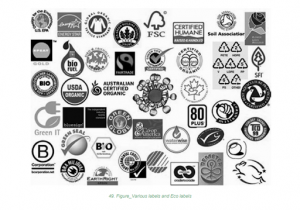Lesson 6: An overview of EcoDesign and EcoLabelling
In this lesson, we will delve into the historical development of ecodesign and explore the concept of eco labeling.
- Introduction to Ecodesign
- Ecodesign, also known as ecological design, is rooted in the Greek words “OIKOS” (house or home) and “LOGOS” (science), signifying its focus on environmentally conscious design and practice.
- Early ’70s: The Birth of Recycling
- In the early 1970s, developed countries and major cities began taking their first steps in recycling materials like steel, plastic, and paper. Recycling emerged as a solution to rising waste quantities, increased raw material costs, and the lower prices of recycled materials.
- Mid ’80s: Environmental Awareness
- Environmental concerns, such as ozone layer depletion, gained prominence in the mid-1980s. The era marked a shift towards conserving natural resources and selecting materials and production methods with environmental considerations in mind.
- Early ’90s: Sustainability and Sustainable Development
- The early 1990s saw the emergence of sustainability concepts and sustainable development. Life Cycle Assessment (LCA) became a vital tool for evaluating a product’s environmental impact across its entire life cycle, from design to disposal.
- International Environmental Protection Conventions
- Key international conventions, such as the Vienna Convention for the Protection of the Ozone Layer and the United Nations Framework Convention on Climate Change, played significant roles in shaping environmental policies.
- Standards and Legislation: ISO 14000 and EU Directives
- ISO 14000 standards were introduced in the early ’90s, focusing on environmental management systems. In the European Union, ecodesign-related norms were incorporated into various directives and regulations, ranging from waste management to product safety.
- Overview of Major EU Directives
- A comprehensive list of major EU directives related to environmental protection, waste management, and hazardous substances, among others.
- Eco Labeling: Connecting Producers and Consumers
- Eco labeling serves as a communication channel between producers and consumers. It provides essential information about products, including their origin, contents, use, and environmental impact.

Conclusion
- The history of ecodesign reflects the growing awareness of environmental issues and the evolution of sustainable practices. Eco labeling plays a pivotal role in guiding consumers towards environmentally friendly products.
Understanding the historical context of ecodesign and the significance of eco labeling is crucial in promoting sustainable production and consumption.